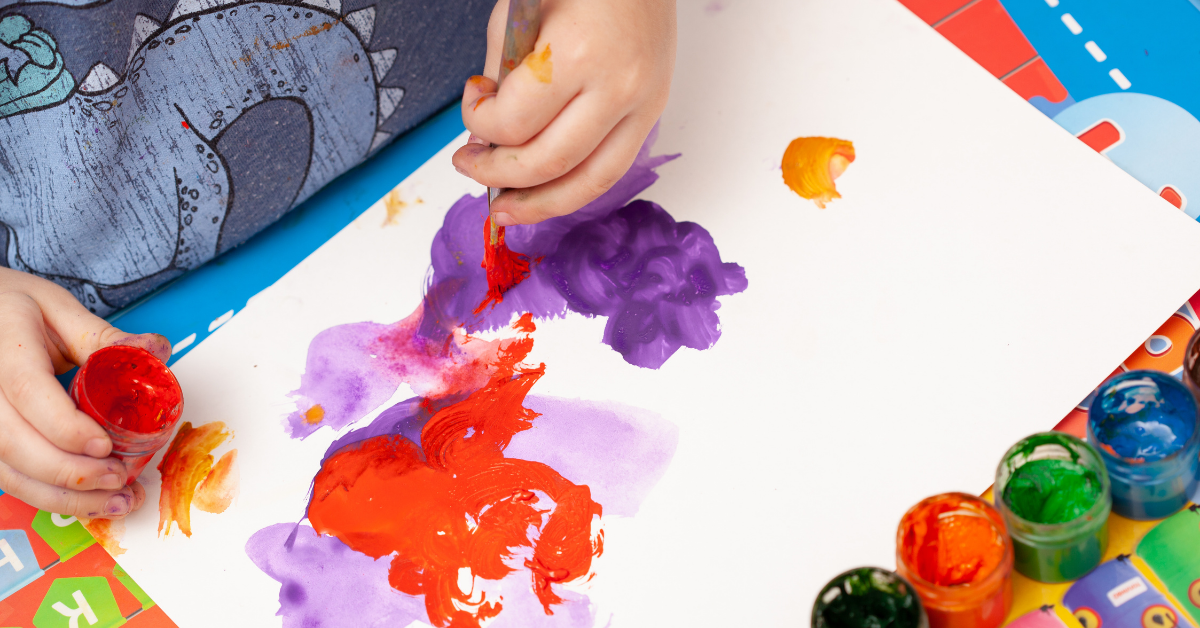
Need to Know
- Imagination is a critical component of child development and a building block for creative thinking.
- Imaginative thinking and creativity support youth academic gains and 21st-century success.
- Research points to collaboration and autonomy as "factors to infusing creativity in learning."
- Kids can practice collaboration and autonomy (and strengthen their imaginative capacities) via processes like project-based learning, a multimedia report, or art.
A Closer Look
Einstein famously said, "Imagination is more important than knowledge." What did he mean by this? And does his idea still hold water in the age of fast-paced innovation?
Einstein's reasoning continues: "For knowledge is limited, whereas imagination encircles the world." In other words, there's no cap to imaginative thinking. Instead, it’s an inventive process with boundless applications.
To see this in action, we can enjoy a few minutes with a toddler. It's amazing, isn't it, how one object—like a Tupperware lid—can take on a multitude of lives? Yet, to the child, the object simply is a semi-truck, a skate, an iPad, or a serving tray.
And, according to experts in child development and learning, inventive play is only the tip of the iceberg. Imaginative thinking benefits young people in a whole myriad of ways. It's a powerful brain-booster (check out its link to advanced intelligence) and bolsters social, emotional, linguistic, and problem-solving skills (Leopold & Mayer, 2015; Lindsay & Colwell, 2013).
There's more. Imagination is the baseline for creativity. It's important to keep in mind that these two abilities are not the same, but they do support each other. "Imagination allows us to think of things that aren't real or around us at any given time while creativity allows us to do something meaningful with our imaginations," explains Aubrey Jones for PBS’ Voices of Education.
Creativity, meanwhile, is essential to both academic and real-world success. Some academics argue that it is the number one 21st-century skill—and that developing students' creativity is our most impactful instructional responsibility. Others, like the NeuroArts Blueprint Initiative, believe "art—like exercise and a healthy diet—is essential to human health and well-being."
A 2019 Gallup study set out to understand the value of creativity in learning. The findings are clear: "Creativity in learning produces positive critical outcomes for students." The executive summary details "significant support for creativity in learning and its promise in preparing students to be productive and successful employees and global citizens."
The Gallup report also identifies what they call "factors to infusing creativity in learning." These include collaboration and autonomy for both teachers and students. In essence, both educators and learners should be supported in
- engaging in prosocial problem-solving; and
- making innovative, imaginative decisions that facilitate or demonstrate understanding.
For example, in the classroom, this might look like kids “showing what they know” through project-based learning, a multimedia report, or art.
The role of art in bolstering imagination and creativity is particularly well documented. This comes as no surprise to the Art Docent Program, which draws on the inspiration of art to fire the imagination in classrooms and schools throughout the US (check out The Art Docent Program's micro professional learning ExPLorations course). Through the program’s Studio Sessions, kids develop their artistic skills using a wide variety of media and techniques. Following a guided gallery visit, it’s time for kids to put their imaginations to work. They use the theme of the gallery visit to formulate and express their own creative ideas.
"Kids really do better in all subjects when their minds are stimulated with fun and engaging activities," says the Art Docent Program. "We talk to adults who had this program as children, and it's among the things they remember most about grade school."
This brings us back to the magic of imagination in learning. It creates memorable links to information. It builds bridges to creativity, confidence, and comprehension. Not to mention, setting our imaginations free can be downright fun.
Aubrey Jones' PBS article leaves us with this: "Imagination is organic; it grows as our knowledge grows. Knowledge feeds the imagination which spurs us on to seek new knowledge. Ultimately, this is the cycle of discovery and learning that we strive for in education."


